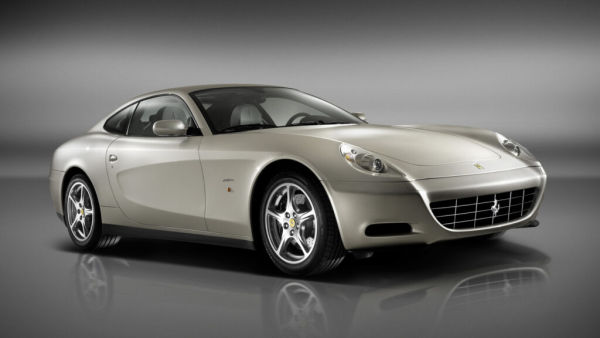Ferrari is commonly associated with notions of class and prestige, with many of the best Ferraris ever built offering an intoxicating blend of power, performance, handling, and, most of the time, looks. However, despite releasing a string of great cars over the years, the Italian automaker hasn’t always nailed that final criterion. While great-looking Ferrari models like the F40 or the 288 GTO are justifiably celebrated as icons, Ferrari has also released a handful of less aesthetically pleasing cars that more than earn their reputation as some of the worst-looking Ferraris ever made.
Now, to be clear, this doesn’t mean that they’re necessarily bad Ferraris. I’ve sadly not been privileged enough to sit in any of these, let alone drive them, so don’t mistake this for a judgment on the overall worth of the cars listed here. This list is only based on their aesthetics, and nothing more. And even then, I have to admit that a bad-looking Ferrari is arguably still preferable to stinkers like the Pontiac Aztek or the Lincoln Versailles.
With that said, let’s lay down a few rules for the selections you’ll be reading here. Firstly, I’m sticking firmly to the “hit the streets” part of our title, so prototypes or concept cars were out of contention. No Ferrari Pinin here, sadly. In addition, I also discounted one-offs or ultra-limited cars made for special clients, such as the Meera S that was built for the Saudi royal family. But with that out of the way, let’s get started.
1. Ferrari F50
I mentioned this in the intro, but I’ll repeat it before you start writing that angry e-mail: I am not at all saying that the F50 is a bad car. Yes, it’s probably an underrated Ferrari, overshadowed as it was by the McLaren F1, and not offering the same outlandish thrills as the proto-hypercar Bugatti EB110 or Mercedes-Benz’s racecar-derived CLK GTR. But that doesn’t make it a sub-par offering.
Reviewers of the time enjoyed it, with Car and Driver calling it “hot, loud, exciting, and surprisingly friendly,” noting that “[t]he terrific thing is that such safe handling is totally unexpected from a car this exuberant.” Besides, there’s no way that someone like me, who grew up using the F50 in “Need for Speed II: Special Edition,” would ever dare claim that it’s bad. That said, it’s not a pretty car, is it?
The nose, with its exaggerated front intakes and slightly bulbous air, is quite ungainly, while the twin bubble bulges visible with the top off aren’t particularly elegant either. There’s also something about the rear three-quarter panels and how they flow into the rear wing that just doesn’t work, in my opinion. Instead of looking like the lean and mean racing machine its F1 heritage demands, the F50 ends up looking bulky. The thing is, it’s not that much bigger than the F40; its 78.1-inch (1,986-mm) width is only barely more than the F40’s 77.5 inches (1,970 mm); it just carries its size much worse. Not that any of this is stopping RM Sotheby’s from predicting a $5,000,000 sale for F50 number 135 in an October 2025 auction, mind you.
2. Ferrari World 8
The Ferrari Mondial 8 was an early-1980s attempt by Ferrari to offer the best of all worlds, following on from cars like the 308 GT4. It had a supposedly performance-minded mid-engined layout, but paired that with a 2+2 seating arrangement. Unfortunately, the Mondial wasn’t all that it was cracked up to be: The fold-down rear seats were tight and didn’t offer much room, somewhat defeating the purpose. Car and Driver went so far as to call the seating arrangement “a dumb way to build a car,” with the folding rear seats deemed “essentially useless in a mid-engined design.”
Ferrari’s 3.0-liter, 214-hp V8 engine wasn’t particularly exciting either, not least thanks to the Mondial 8’s 3,185-pound (1,445 kg) dry weight. It topped out at 143 mph (250 km/h) and took 9.3 seconds to hit 60 mph in Car and Driver’s hands. So it wasn’t as practical as it seemed and not very fast. But the icing on the cake that made the Mondial 8 a Ferrari hated by owners and critics alike undoubtedly has to be the styling.
While it has some classic Ferrari traits, such as the side strakes and five-spoke wheels, the overall impression is disappointing. The side strakes aren’t nearly as dramatic as those on, say, the Testarossa, while the overall profile and proportions bring to mind a second-rate attempt to ape Ferrari’s late-’70s and early-’80s style than something you’d expect from the automaker itself. And then there are the bumpers: In any color other than black, the bumpers stick out like sore thumbs, ruining the car’s already-scuffed lines.
3. Ferrari 612 Scaglietti
Ferrari’s big, front-engined V12 grand tourers haven’t always been amazing to look at, especially not in the modern day. The 456M GT, for example, is undoubtedly bland; the 575M Maranello, while a bit more eye-catching, still isn’t what I’d call a classic Ferrari design. That said, neither is necessarily bad-looking, nor are they offensive to the eyes; they’re just not that exciting to look at. But that, unfortunately, isn’t something one can say about the 612 Scaglietti.
The main issue with the 612 Scaglietti is the front. I don’t necessarily have any huge complaints about the proportions of the 612 and other front-engined V12 Ferraris, although I’ll admit that it’s not the sort of silhouette that gets me excited. Still, there’s nothing overtly wrong there; it’s all about the grille and headlights here. The combination of those squashed, flush headlights and the small, mouth-like grille gives the front an almost comical look not befitting of a big-money, V12-engined grand tourer. And while the rest of the car isn’t quite as bad, there’s also nothing that good to say about it either: It’s a combination of an ugly front and boring everything else.
To be fair, few of the 612 Scaglietti’s rivals in the mid-2000s big-bucks European grand tourer battle were necessarily good lookers. I’m a fan of the Aston Martin DB9 and Vanquish, both of which we consider some of Aston Martin’s best-ever cars, but others — such as the Bentley Continental GT and Mercedes-Benz CL600 — aren’t exactly stunners either.
4. Ferrari 365 GT4 2+2/400/400i/412
It’s hard to imagine a car this uninspiring to look at lasting as long as it did in the lineups of any other prestige automaker, but I guess there’s a reason for everything. This particular Ferrari had a long life: It debuted as the Ferrari 365 GT4 2+2 in 1972 and lasted nearly two decades before Ferrari discontinued it in 1989, by which point it was known as the Ferrari 412.
In between, it spent some years as the Ferrari 400 Automatic, Ferrari’s first-ever automatic car, and the 400 GT, both of which were replaced by the fuel-injected 400 Automatic i and 400 GTi in 1979. One thing remained constant over the years, though: its ugliness. Well, okay, maybe “ugly” is being a bit unkind, but the 365/400/412 falls into the same trap that the Mondial 8 falls into, in that it looks like a boxy, somewhat cheap imitation of what a Ferrari could be, complete with pop-up headlights that ruin what little vibes there are.
I’ll put it this way: The 365/400/412 looks like a larger, more upmarket version of something like the much-loved, exotic-car-aspiring 1985 Toyota MR2. While that may not necessarily be a bad thing on the surface, it’s not a good look for an actual Ferrari. The MR2 was a Toyota, and one can forgive it for not quite nailing the look of the cars it was aspiring to be. The Ferrari has no such excuse. Not so surprising, then, that even a ~25,000-mile example only fetched 42,000 British pounds at a 2020 RM Sotheby’s auction.
5. Ferrari 365 GTC/4
Ferrari has a long line of 2+2 cars, some with token rear seats that were of dubious use. And many of these also aren’t great to look at, almost as if the exercise of squeezing an extra couple of seats threw Ferrari’s designers off entirely. The Ferrari 365 GTC/4 from 1972 is one of the many examples, and I’d consider it one of the least appealing of the lot.
Despite the similar name, the 365 GTC/4 has little to do aesthetically with the Ferrari 365 GT4 2+2 that came out the same year. Instead, the GTC/4 is hewn from the same cloth as the iconic 365 GTB/4 “Daytona” that ostensibly featured in “Miami Vice.” Thus, instead of the boxy lines of the 365 GT4 2+2, the GTC/4 had curvy bodywork and a fastback design that aimed to echo the Daytona, just bigger. Unfortunately, while the Daytona is a high-water mark for Ferrari and considered one of the coolest grand tourers ever built, the larger 365 GTC/4 isn’t really held in the same regard.
Now, part of that likely has to do with how the GTC/4 is a softer, more laid-back ride aimed to tap into the then-nascent U.S. luxury market. However, I’d argue that it also has a lot to do with the looks. The GTC/4’s design comes across as a middle-of-the-road hybrid of the Daytona’s general proportions and the muscular bulges of the C3 Corvette Stingray, but without the strengths of either approach. It’s almost a bit sad, really, although it is apparently a pretty good car to drive.








